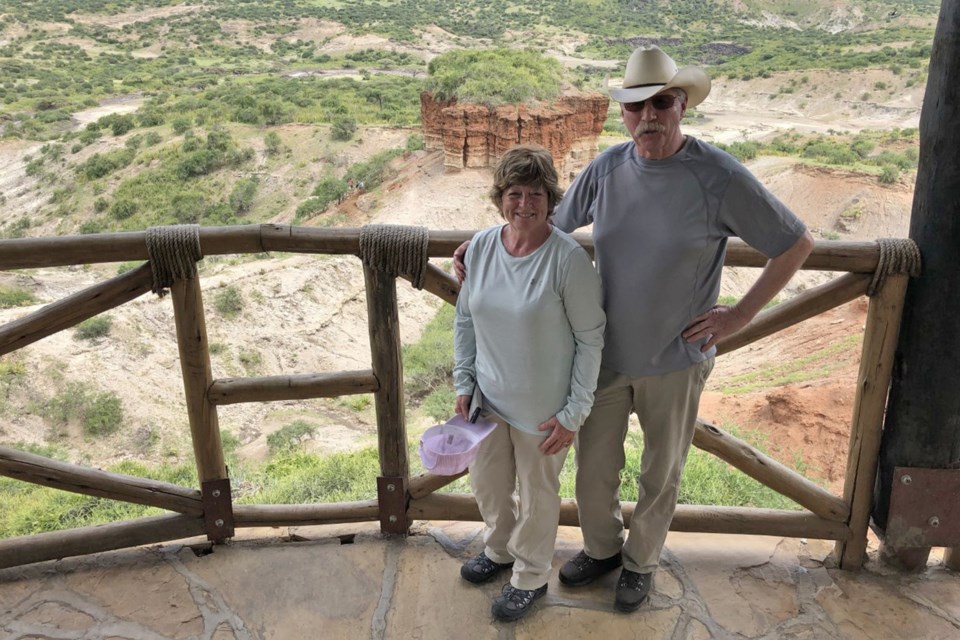SUNDRE - Vast and open stretches of raw, wild land untouched by any trace of human activity left a major impression on a Sundre-area couple who recently returned home from a photo safari in Africa.
“The Serengeti is endless plains,” said Larry Nielsen, describing a landscape that can reach out hundreds of kilometres to the horizon without so much as a fence in sight.
“Our expectations were exceeded.”
The huge tracts of land with virtually zero development and covered with animals such as wildebeest, zebras, lions, cheetahs, giraffes and gazelles for as far as the eye can see was breathtaking, said Nielsen, who with wife Connie got home from a two-week trip to Tanzania and Zanzibar at the end of January.
Both are former educators in the region who also ranch north of town along the James River Road. The couple had dreamed about embarking on such an adventure for decades.
Seeing the 1985 movie Out of Africa, which featured “such beautiful landscapes,” planted the seed in their minds. Discussions with people from the community who had previously gone on photo safaris further reinforced their desire to go. But he said the chance had never presented itself until more recently.
“Most of our lives, we were working and didn’t have the opportunity,” he said, adding that they finally had the flexibility in their schedule to commit.
After a brief visit to Amsterdam that included an interesting canal tour, the couple spent 10 days on the photo safari that spanned five parks in Tanzania, before wrapping up their once-in-a-lifetime trip with four days on the island of Zanzibar.
“To see the amount of wildlife and the expanse of the Serengeti and various other parks, it’s amazing,” he said.
Camping out on the plains provided quite an immersive experience. One night, the couple heard lions roaring nearby. During another day, they saw hippos grazing in the grass just outside the camp. Asked how he would summarize the experience in a word, he said, “spectacular.”
Further elaborating, he added one word could never suffice, and perhaps the most unexpected observation was the huge cultural differences.
Having visited other places such as Cuba and Mexico, the culture shock from the experience in Africa was an eye opener, he said.
Tanzania is home to archaeological discoveries of early hominoid fossils, indicating the presence of humans stretching back to the earliest chapters of ancient history, yet people to this day largely continue to live simple lives, he said.
While there are some modern urban developments, many rural inhabitants reside in “very rudimentary houses with zero to minimal services,” he said.
“The other side of that is the technology,” he added.
Juxtaposed with mud houses that have thatched roofs are farmers and shepherds walking behind their livestock like goats and sheep while chatting away on a cellphone, he said.
“They have better internet and cell service than Sundre,” he said, surmising that a mobile phone service can’t cost too much if someone with so few earthly possession can still afford one.
The final unexpected touch upon the return home was roughly a week of recovering from jet lag — there’s a 10-hour difference between the time zones — before getting back into the rhythm, he said.
The safari, explained Nielsen, largely came together courtesy of planning efforts previously laid out by the late Eric Boulsten, once the curator of Chester Mjolsness’s World of Wildlife exhibit at the Sundre and District Museum. Boulsten had also done a lot of work in parks in Tanzania and created a template for such excursions.
“Chester met him while hunting in Africa,” he said, adding Mjolsness later hired him in the early 2000s to become curator.
“Since then, a fair number of other trips have gone from our area.”



